The SMT adaptation was a hobby project. The MFOS designs are the property of SynthCube.
If you want to buy PCB for the MFOS synths, please visit musicfromouterspace.com
MFOS Sound Lab Mini-Synth is a cool analog monophonic synthesizer. The original version has been created by Ray Wilson from Music From Outer Space.
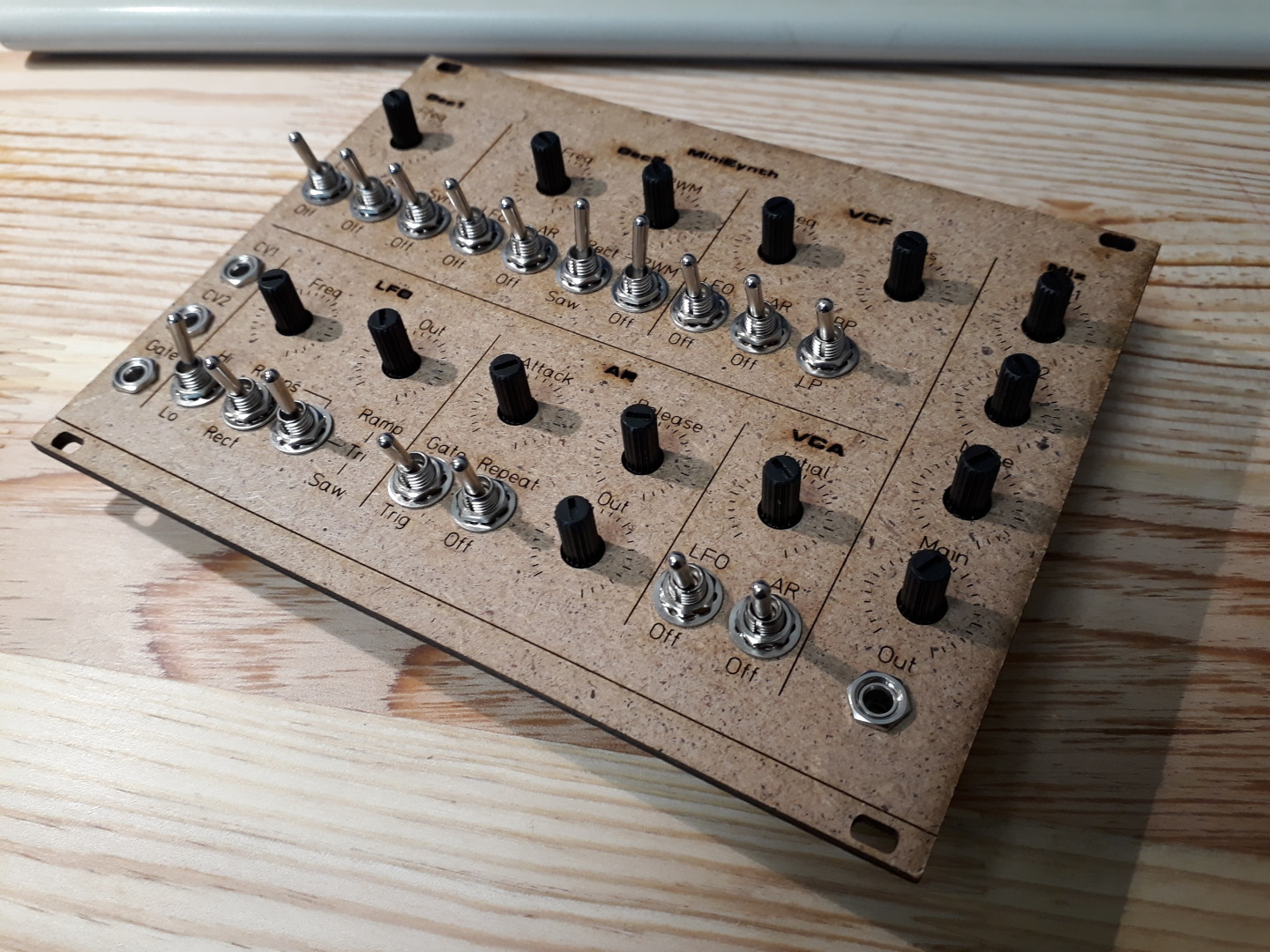
There is an updated version available. Please, check the latest informations here.
The SLMS is composed of two VCO (Saw and Saw+PWM), one Envelope Generator (AR, re trig-able), one LFO, one VCF, one VCA and one Noise source. All the elements are internally routed. LFO and AR Envelope can modulate (On/Off) all the other elements.
See the diagram below for a graphical representation of the internal wiring.
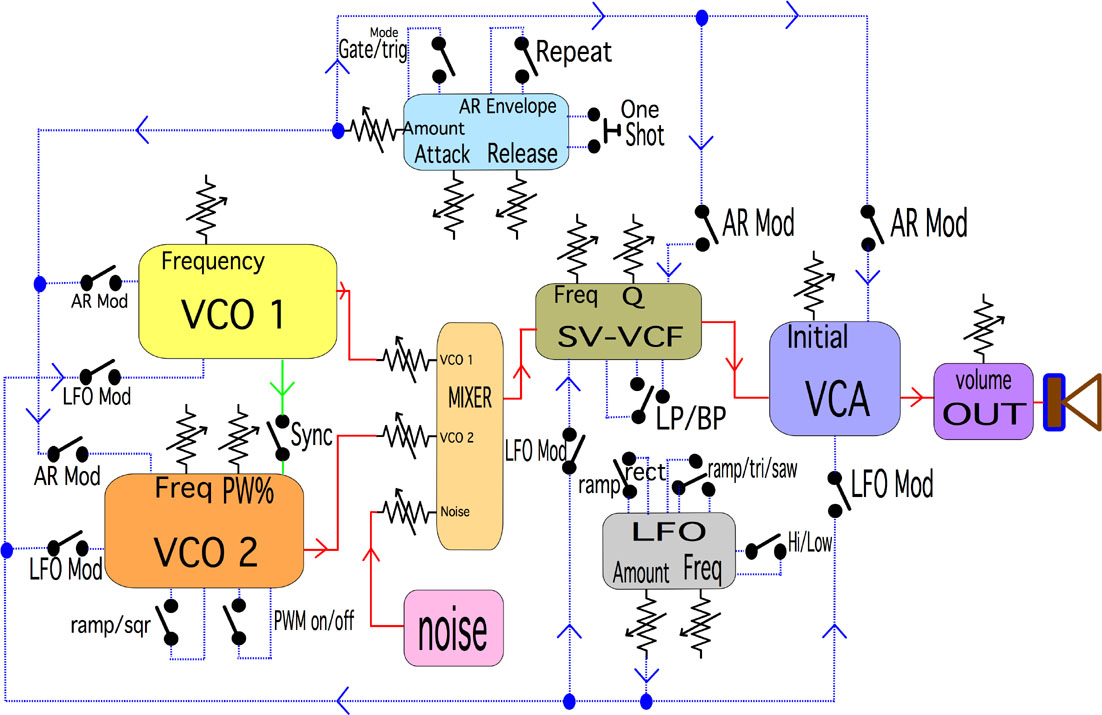
Tom Fenn of Birmingham, UK. It will help you imagine the sounds you can make.”
(C) http://musicfromouterspace.com
You’ll find more details and explanations of the differents circuits, the complete theory of operation, etc. on MFOS website.
The SMT Edition, version 1.2
This is an updated version. You can also read SMT SLMS previous posts.
The SMT Edition has been specifically designed to fit in a Eurorack System (Power input: -12, 0, +12 volts) and it removes any extra wiring. It’s a one board solution.
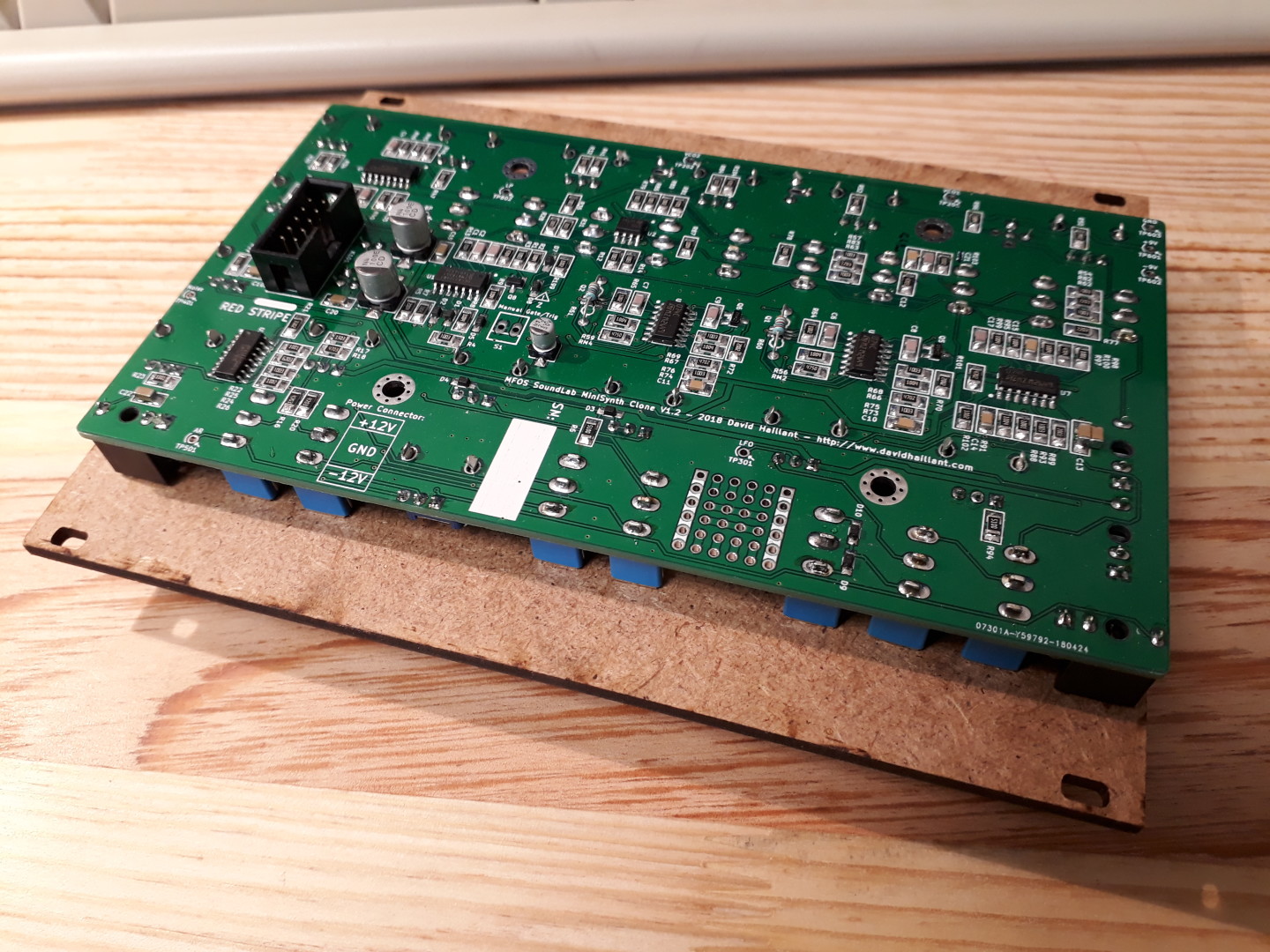
Also, while the original is designed for beginners (with some technical backgrounds), this version is in Surface Mount Technologie (SMT) and thus, requires some experience in soldering such small components.
Same circuit…
The electric circuit is identical to the original SLMS. Also, it does not include the later optional mods proposed by Ray.
I strongly recommend to read the original documentation.
Cross reference between the two version is easy: the part references and values are identical. R1 in SMT version is R1 in Ray’s original version, and so on.
… with a few adaptations
The conversion from Through Hole to SMT required some component updates:
- The FET transistors (MPF102) Q5 and Q6 have been replaced by two BF545.
- The four NPN transistors (2N3904) Q1, Q2, Q3 and Q4 have been replaced by two NPN arrays BC847BS. They are closely matched and remove the need to hand match transistors.
Adaptation to Eurorack Power Bus is made with the following:
- The power input is buffered with two linear regulators 78L09 and 79L09 (U101 and U102). They lower the input voltages from -12 and +12 volts to -9 and +9 volts. 100nF capacitors C101 and C102 provided for stability.
Build instructions
The assembly is pretty straight forward. No kludge, bodge, correction, mod or whatever is required to make it works.
The Surface Mount Components
SMT soldering is easier than what it looks like. No need for special tools or special soldering iron or tips.
I recommend the use of thin solder wire. 0.3mm is good. 0.5mm is ok.
Get a good pair of fine, non magnetic, tweezers.
To help you with SMT component placement, I created a Component Map, one page by value, showing in RED where each component goes.
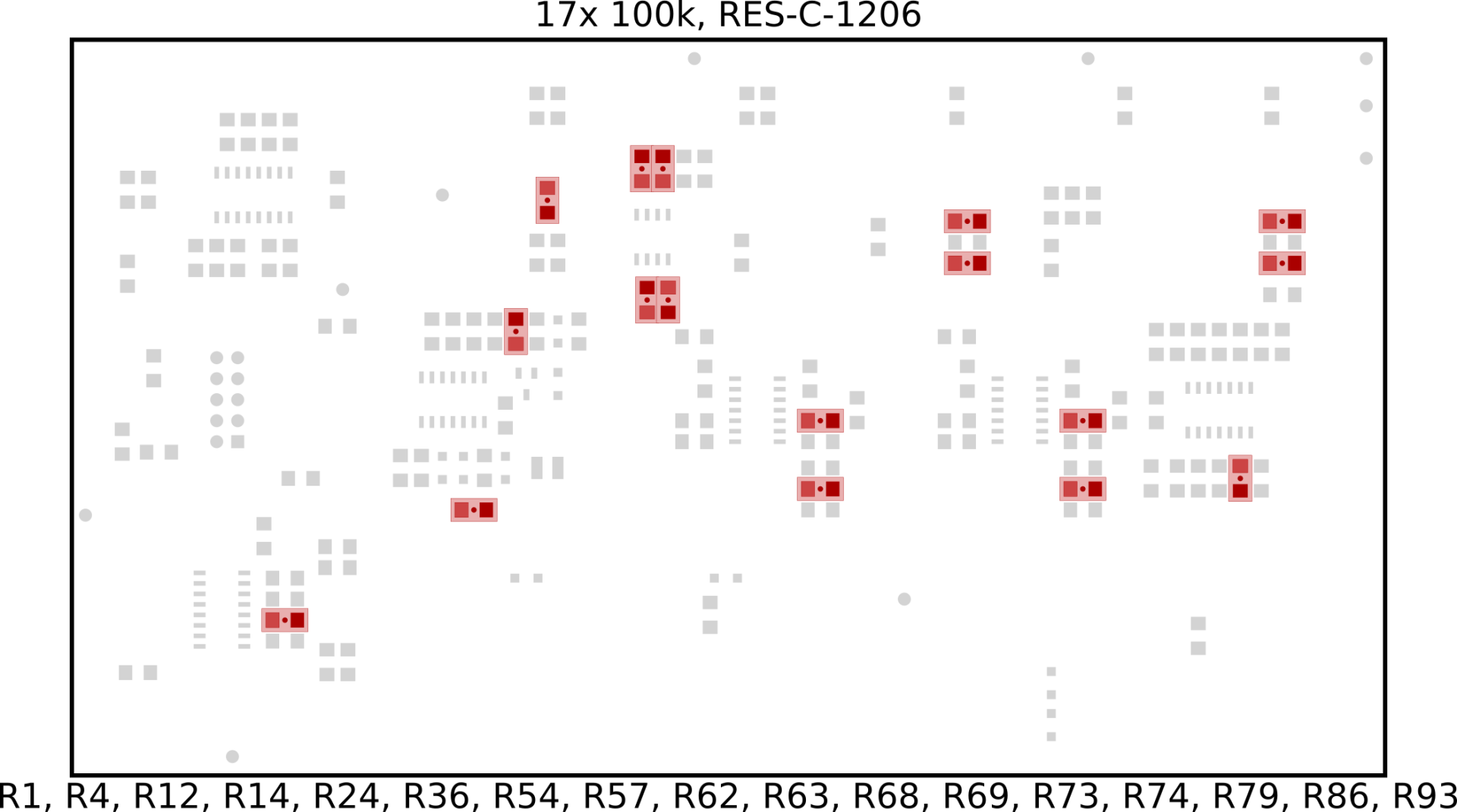
Check also this Interactive Pick and Place Map.
Usually, it’s recommended to start by soldering the smallest parts. Tall components can block you. Start with resistors for example. And start with the largest group of same value resistors, for instance, the 100k group. Then continue with decreasing group sizes.
Next step is SOIC packages. The white dot mark on PCB represents pin #1.
Continue with SOT transistors and SOD diodes. Prefer SOD 323 over SOD 323F. Attention, D8 is the Zener Diode.
The most challenging parts to solder are the two transistor arrays Q1 and Q2 (SOT 363 package). The BC847BS doesn’t have a polarity (the part is in fact symmetrical) so simply focus on pin alignment to the pads. Check for possible shorts between pins.
The capacitors require a special attention. Ceramic caps are fragile. They can break easily if bent, twisted, squeezed, heated too much… You wont notice a broken cap, until it fail either open or worse, closed (short circuit!)
Also, there’s no marking on ceramic caps. Do not mix values!
Finish with the aluminum capacitors.
The Through Hole Components
Now it’s time to solder the Through Hole Components. Here’s my recommended order:
Flip your board and solder the two regulators. 78L09 is U101 and 79L09 is U102.


Continue with either Q7 or Q101. 2N3904 are good Noise sources. Use Q101 for 2N3904 or Q7 for BC547. Use only one of them, not both.
Flip again your board and solder the 10 pin Eurorack Power Connector K101.
Now is a good time to solder the (Tempco) resistors R60 and R61. They are mounted on TOP of the Transistor Arrays Q1 and Q2. Place them as close to the arrays as possible.
The Bottom side of the board is now complete (connector S1 is optionnal). It’s time to solder the remaining TH components.
Starting as usual with the smallest ones.
RM1 and RM3 come first. Orient the screw head toward the outside.
If you already have the Front Panel, you can use it now. It will help you align correctly the controls.
Solder the four jack connectors.
Then, the potentiometers. Before soldering them, I highly recommend to remove the protruding tabs with pliers. You might need to remove the nuts and washers.
Finally, solder the Switches. Pay attention to S16. It’s the only 3 position switch.
If your switches come with 2 washers and 2 nuts, only keep 1 of each.
First tests and calibration
Before plugging in any power source, check twice your job! If there’s a short circuit anywhere on the board, the two regulators will switch off quickly, but some damages can occur nevertheless.
Power your board with -12, 0, +12 volts (see “power connector” diagram on the board). Also, a thick white band indicates the -12V rail (usually the “red stripe” on your ribbon cable).
The Front Panel
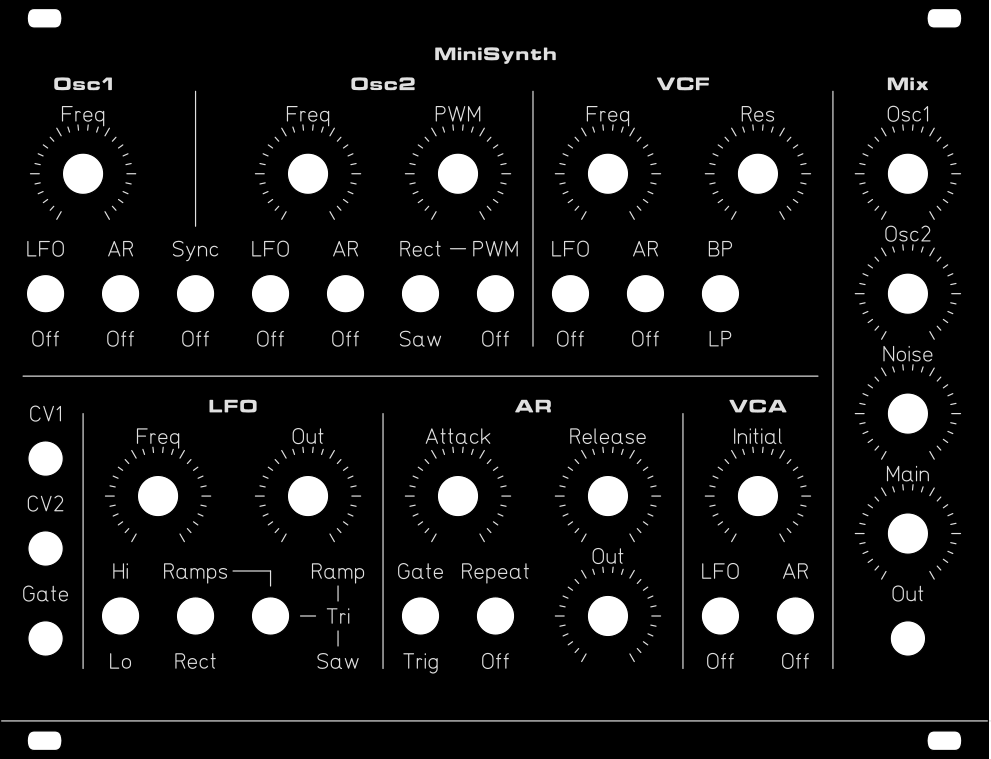
You can find the CAD file download link in the Downloads section below.
Michele (Modular Audio Devices) has designed this amazing panel, using KiCad. Contact him if you want one:
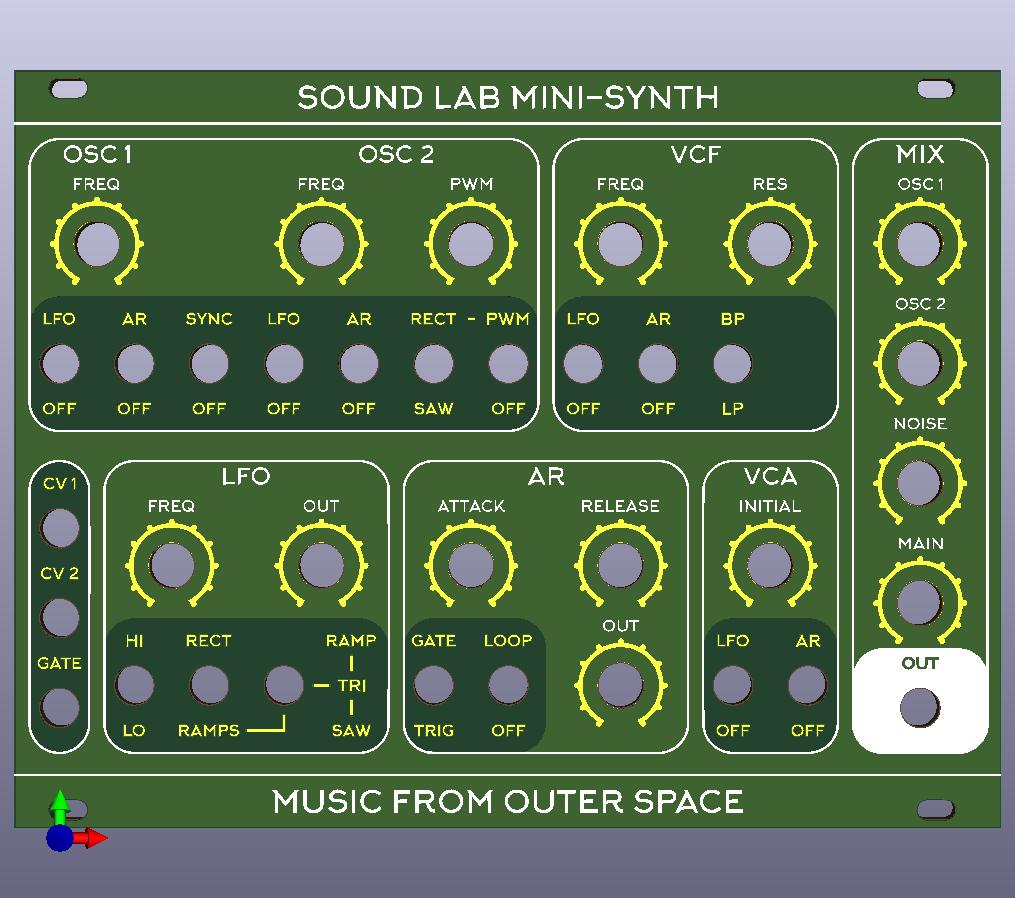
BOM
For a complete list of components, suggested sellers and parts, sorted by values, with refs and comments, see Google Calc document or below in Downloads section.
There’s also a PDF document showing Component positions and an interactive BOM available.
Temperature Compensation Resistors
Temperature Compensation Resistors R60 and R61 can be found at Thonk Tempco Resistor – Akaneohm 1% 3300ppm
However, it’s possible to use simple 50ppm/°C resistors instead. Your VCO will work, track the 1V/octave CV input but will be out of tune as soon as the temperature will change.
Switches
All switches are SPDT (Single Pole, Double Throw) with the exception of S16, which is a “3 position” SPDT with an additional central position (No Contact).
SPDT is ON – ON (Mouser: 506-A101SYZQ04)
SPDT “3 position” is ON – OFF – ON (Mouser: 506-A103SYZQ04)
The two Mouser ref should be ok for the job.
Sources for pots and jacks:
Potentiometers:
- https://www.thonk.co.uk/shop/alpha-9mm-pots/
- http://smallbear-electronics.mybigcommerce.com/alpha-single-gang-9mm-right-angle-pc-mount/
- https://www.musikding.de/Pot-9mm-100k-lin-Print-vertical
https://erthenvar.myshopify.com/collections/9mm-potentiometers/products/smooth-shaft-vertical-pot(Erthenvar shop is now closed)
10 mm height Jacks (PJ398SM / “Thonkicon”):
- https://www.thonk.co.uk/shop/3-5mm-jacks/
https://erthenvar.myshopify.com/collections/accessories/products/3-5mm-inline-jacks(Erthenvar shop is now closed)- http://www.qingpu-electronics.com/en/products/WQP-PJ398SM-362.html
Downloads
- Schematics (mfos slms-1.2-20190402.pdf)
- Front panel design, Black/natural engraving (euro slms 33hp 20180821.fpd)
- SVG version of Front Panel (euro-slms-33hp-20180821.svg)
- Pick and place map for Surface Mount components (See also the Interactive BOM below)
- Interactive BOM (MFOS SLMS-1.2-ibom-2019-04-02 13-58-11-2021-02-13)
- Front Panel dimensions (slms-33hp-20180821-dimensions-20200406.pdf)
Gallery
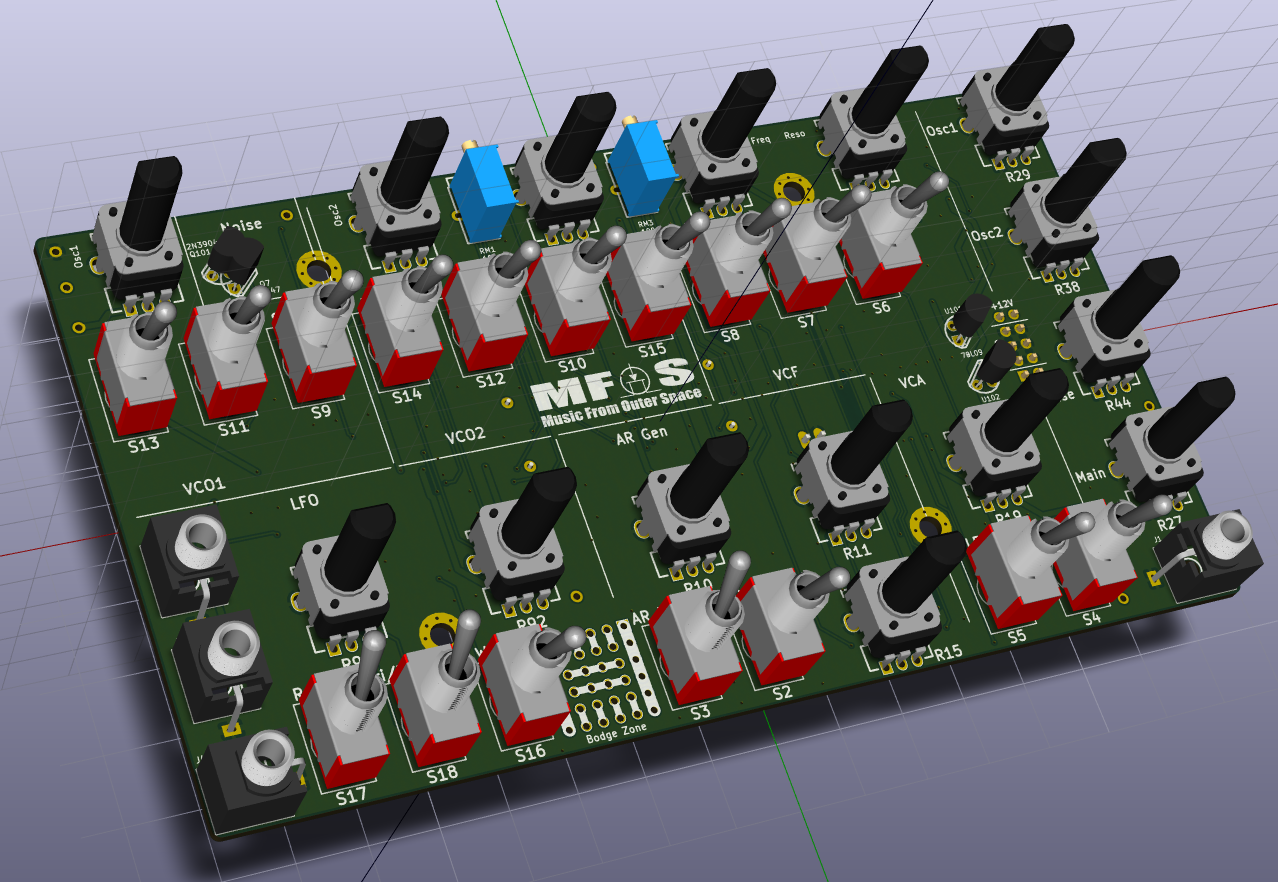
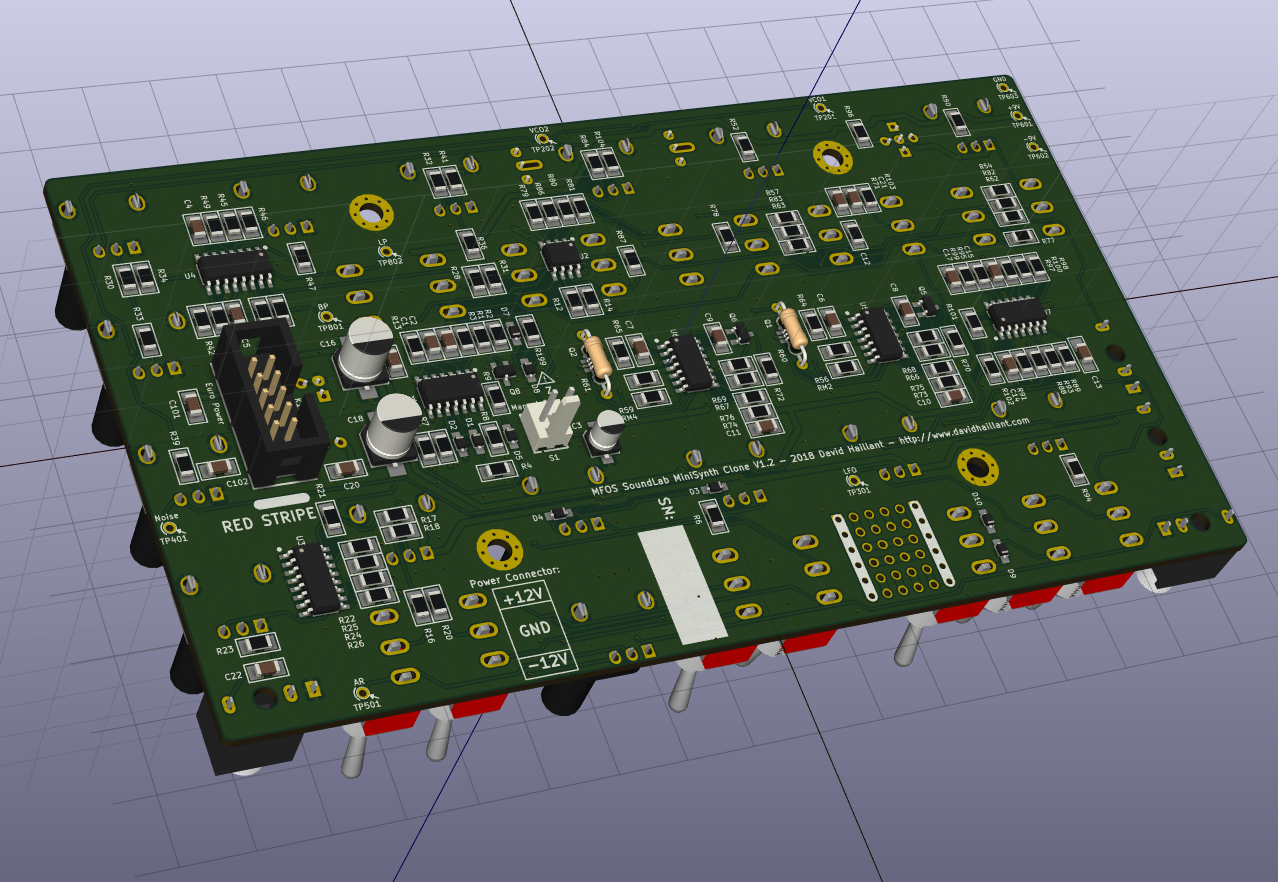
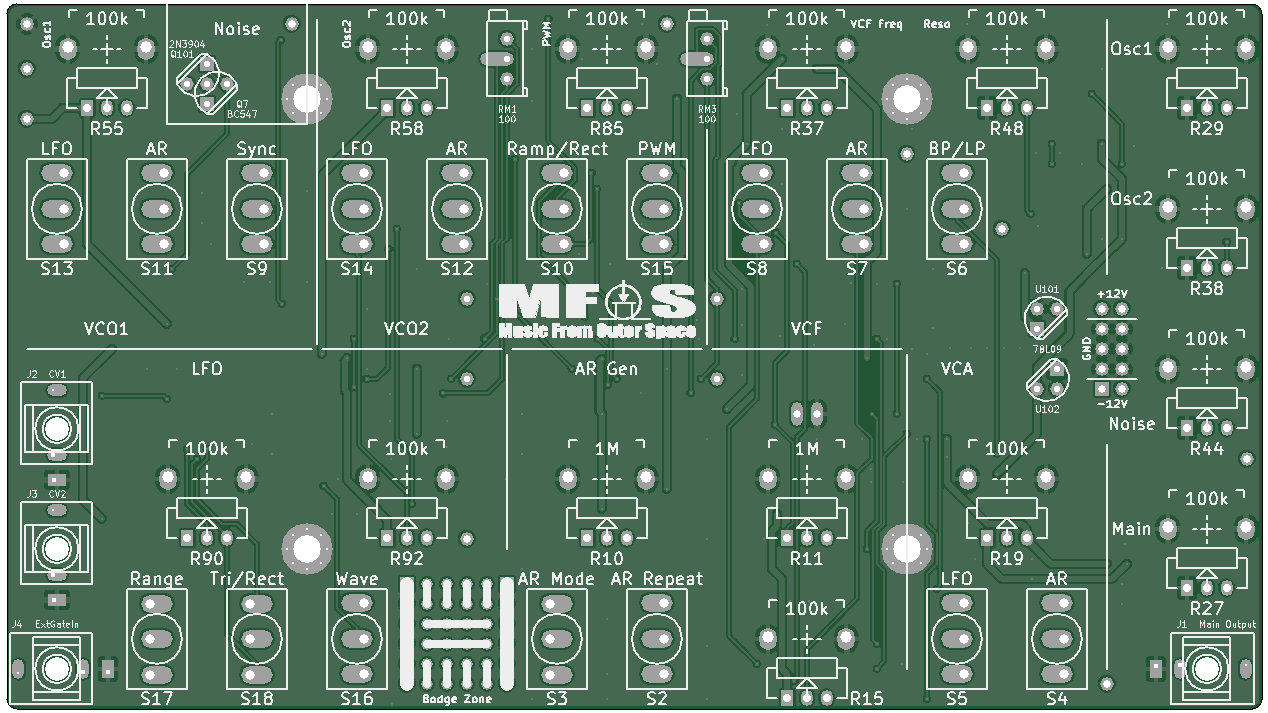
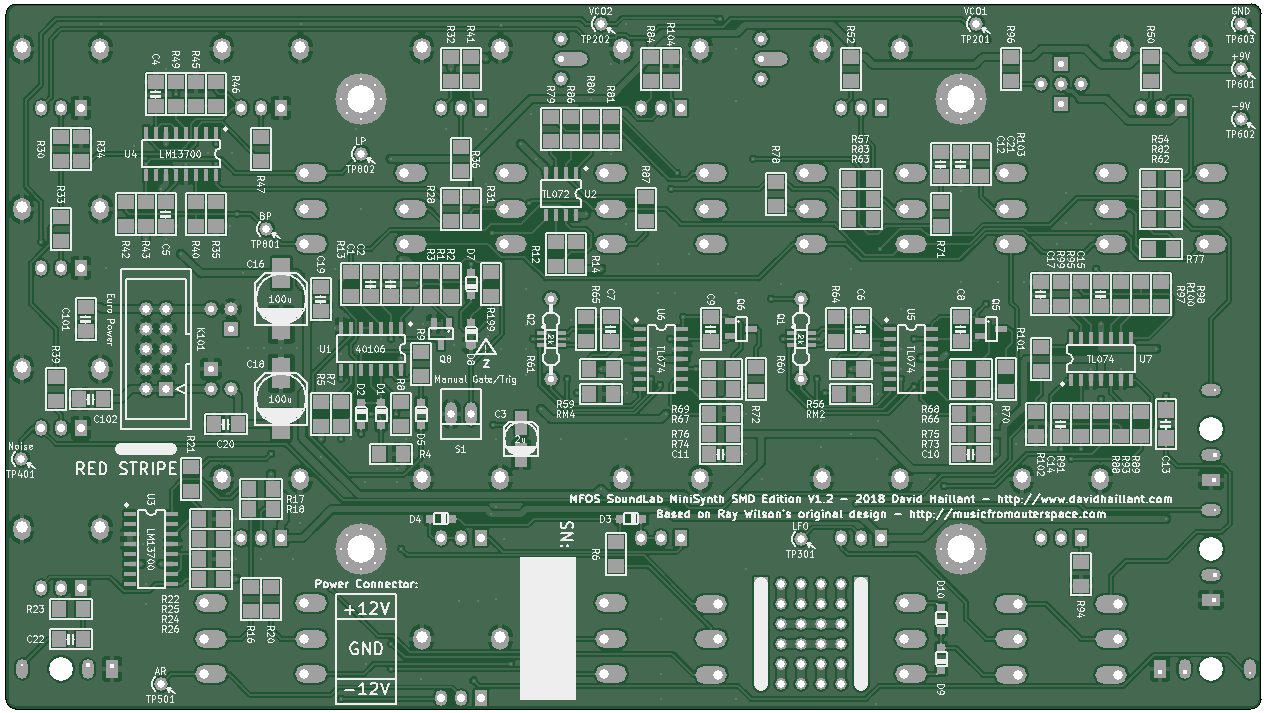

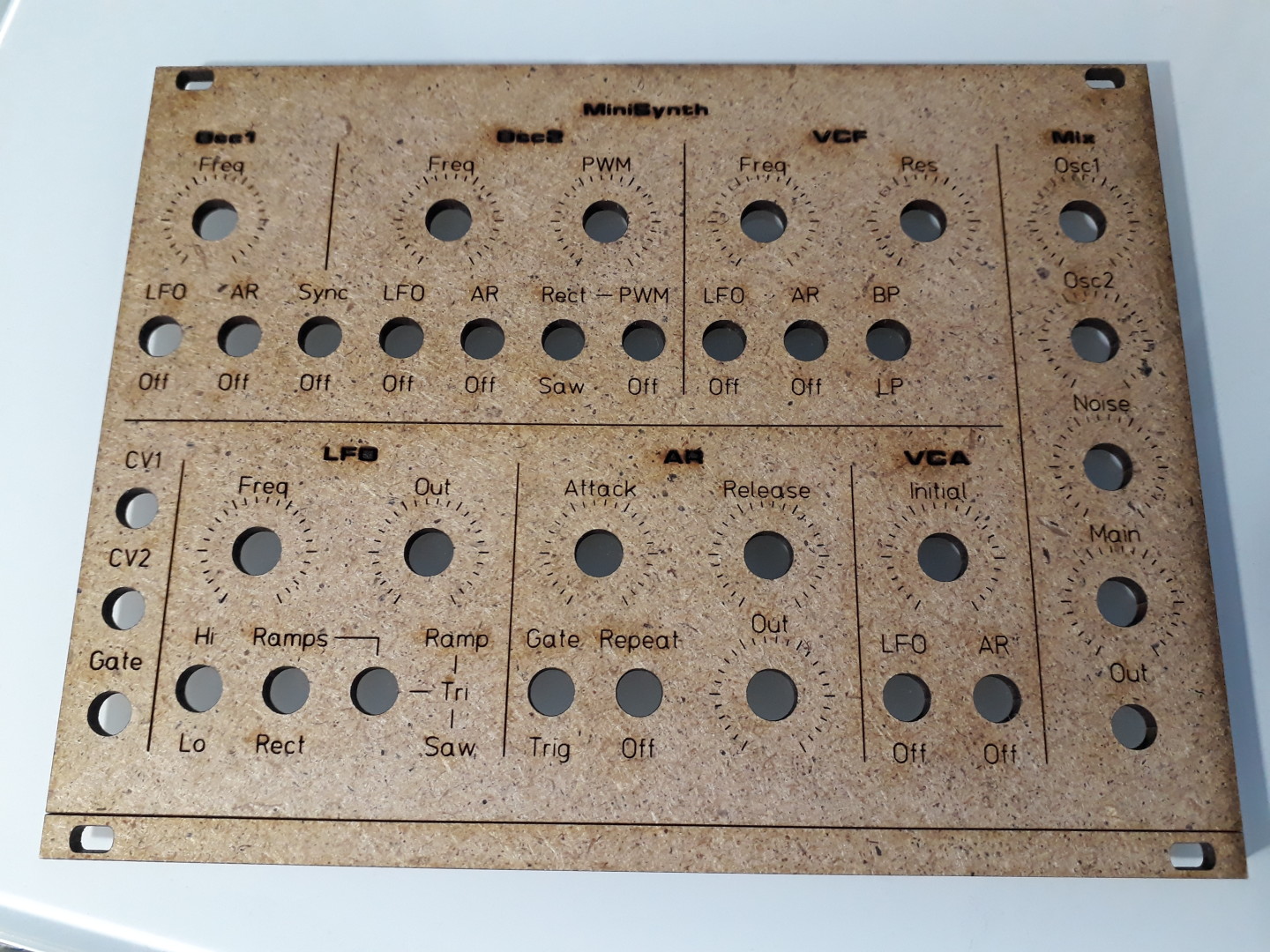
SLMS made by other users
Csaba made this gorgeous aluminum panel with the Toner Transfer method:
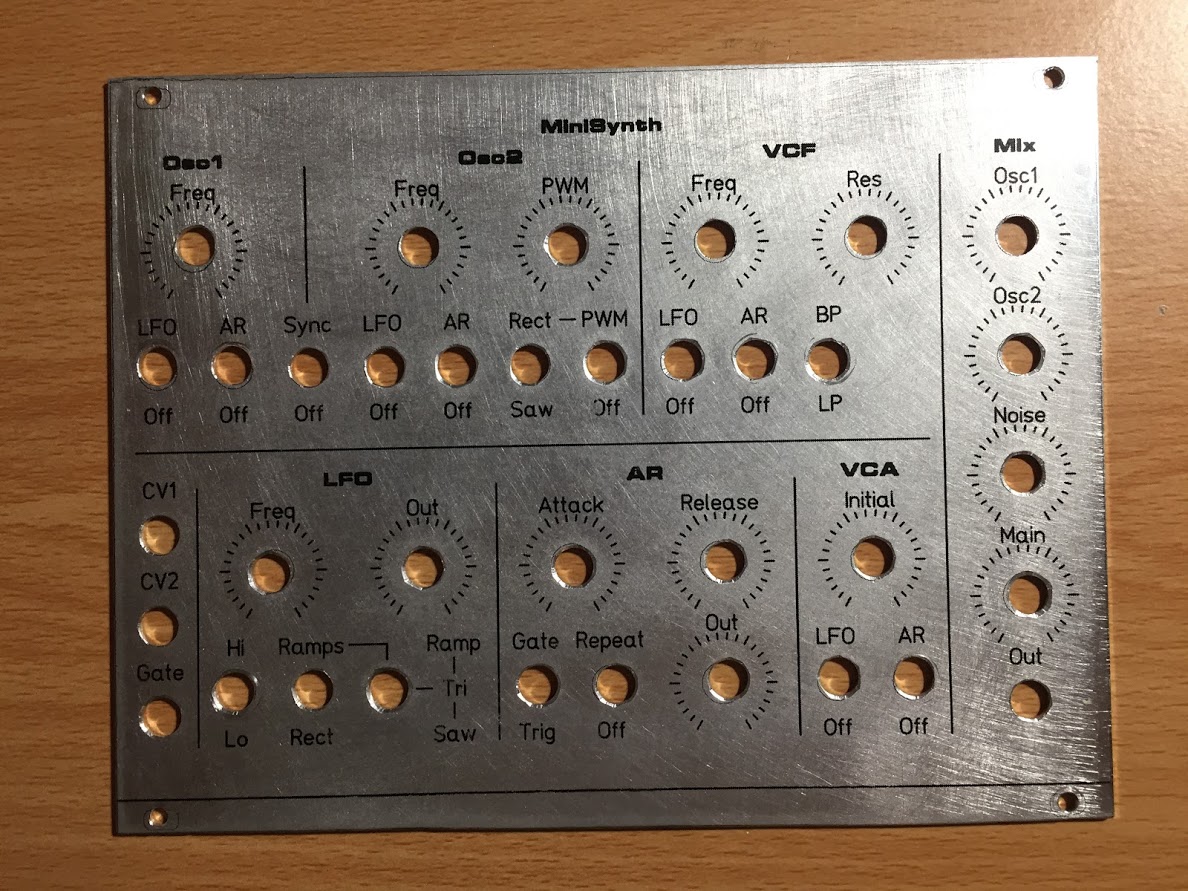
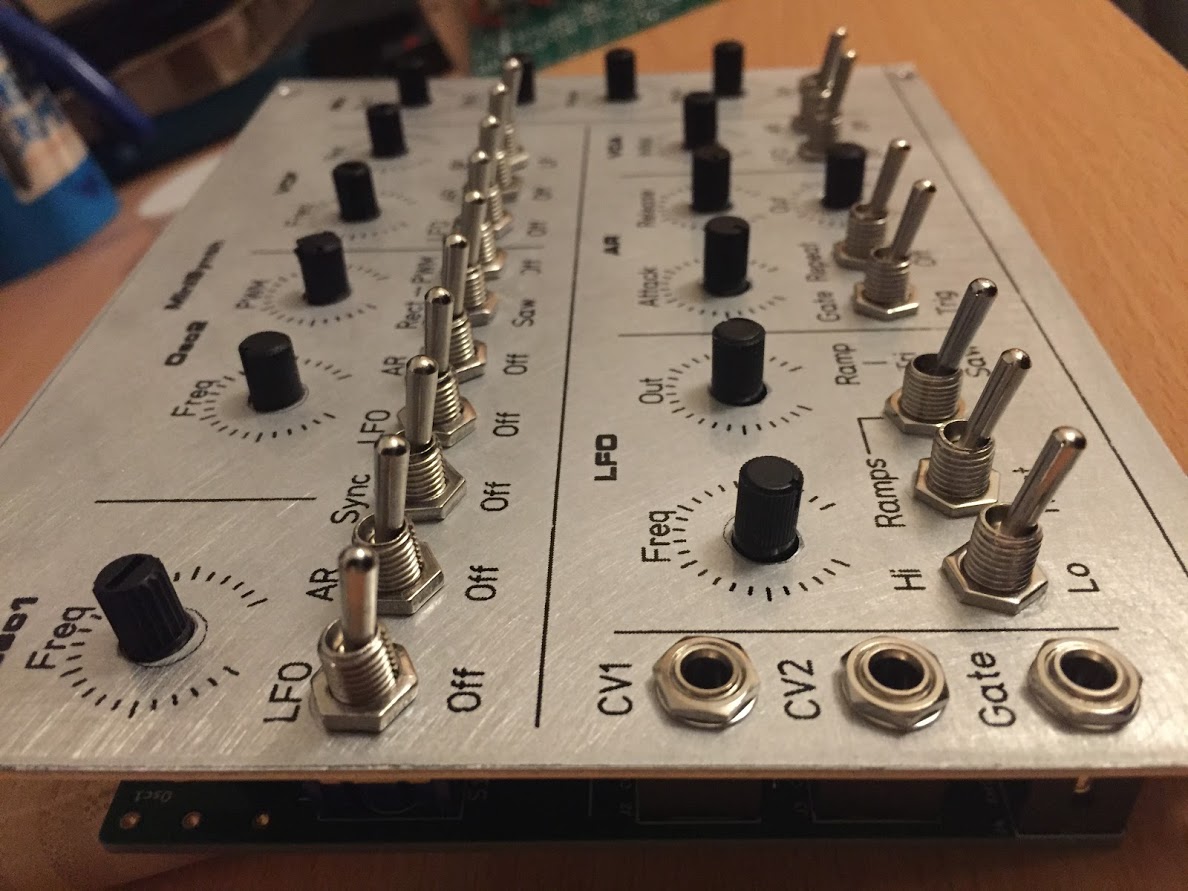
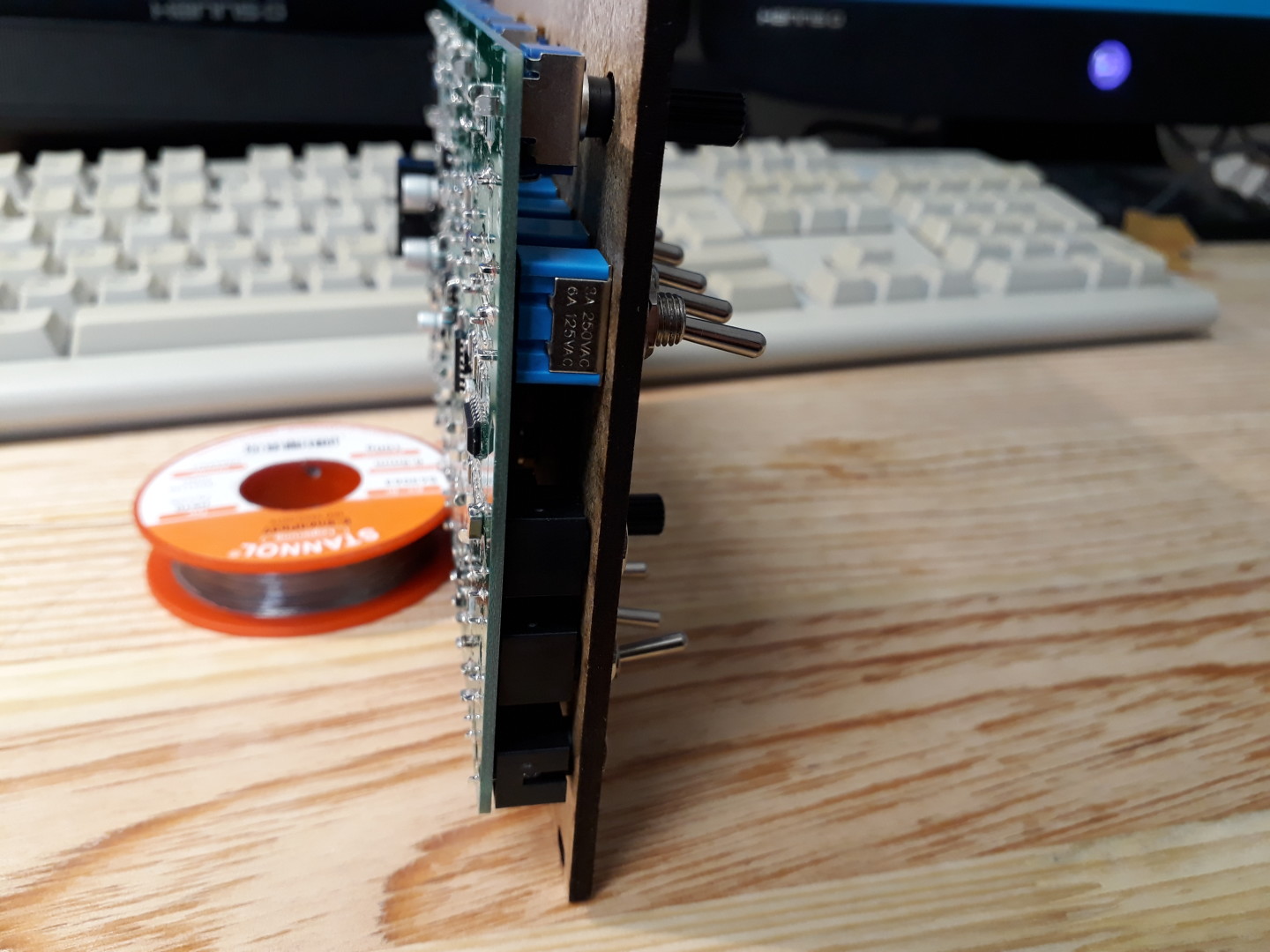
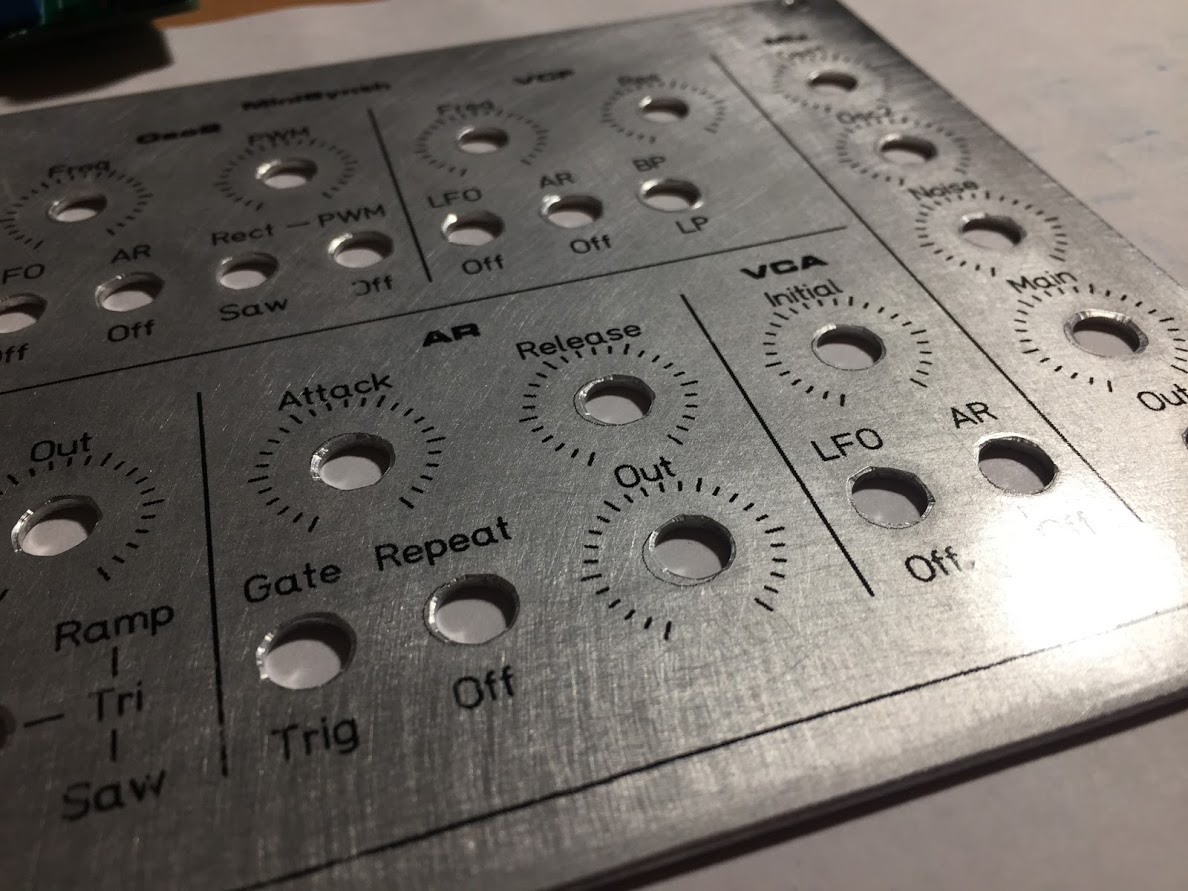
Hi David
I’m feeling foolish – I can see assembly instructions, BOM etc, but cannot figure out where or how to get hold of the PCB for your implementation of Ray’s MFOS SLM-S.
Can you help?
cheers
Derek
SLMS is not yet officially released. I do have prototypes still available though. Just contact me if interested.
Hello David. I’m sourcing parts for this, and I discovered what I believe to be some errors in the BOM:
1) LM13700N/NOPB is the DIP version, it should be LM13700M/NOPB-ND for SOIC-16.
2) Not really an error, but 79L09’s are obsolete in TO-92 format. There are substitutes in TO-243 and THT versions. I’ll probably use a THT version, as the pinout looks the same to me.
Let me know if I’m not correct here.
Hi Nick!
You’re right, Mouser ref. 926-LM13700MX/NOPB should be fine.
About the 79L09 I’m really confused… I hadn’t noticed it became obsolete!
Reichelt in Germany is still selling it, so I wasn’t aware. I have some stock available if it helps.
I will try to find a workaround. TO-243 package is an interesting alternative, but I need to make a PCB revision for that. I also might create a PCB Mod Board.
What substitutes do you know of? I can’t really find one right now… Any suggestion is welcome 🙂
Anyway, thank you very much for pointing this out!
Hi David,
many thanks for the 3d models!
can you please share the 3d model of the Thonkiconn PJ398SM Jacks?
Kind regards,
Christian
Hello David,
I’d like to know if you have documentation for v1.3 of the SLMS please ?
Kind Regards,
Manish
Hi Manish,
I just published an updated documentation for the 1.3. It’s here: MFOS Sound Lab Mini-Synth in SMT – Assembly Instructions – v1.3
All the best,
David
Hi David,
Thanks very much for the update!
Kind Regards,
Manish
Hej David. Unfortunately the beer joined together hasn’t worked out at the Superbooth in the last few years. After a good three years now, I’m getting around to equipping the MFOS: I’m currently using version 1.2.
Now that I have installed several 78L09s and I have compared the Schmatics with the 3D image from KiCAD, here is my question: Is it possible that the image incorrectly depicts the installation of the 78L09. Ground receives the voltage? Or do I really only have faulty voltage regulators, considering my age?
Kind regards
Hello Renzo, so glad to hear from you!
I uploaded a close up 3D view of the two regulators and a screenshot showing the Nets connected to the regulators (viewed from top).
Please provide a close up photo of the two regulators, maybe I could spot something?
Feel free to contact me through Discord or by email. 🙂
Kind Regards
THX. I ´ll try harder, See you hopefully again soon in Berlin ?